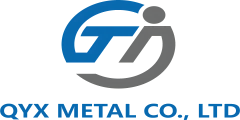What are the materials of aircraft engine turbine blades? What are the cooling methods of turbine blades?
Turbine blades are an important component of the turbine section in a gas turbine engine. The high-speed rotating blades are responsible for drawing high-temperature and high-pressure air into the burner to maintain the engine's work. Next, let me tell you in detail what are the materials for the turbine blades of the aircraft engine and what are the cooling methods for the turbine blades.
1. What are the materials of aircraft engine turbine blades?
A. Deformed high temperature alloy
The development of wrought superalloys has a history of more than 50 years. The wrought superalloys commonly used in domestic aircraft engines are mainly Cr-Ni alloy systems and Cr-Ni-Co alloy systems. For details, refer to Table 1. As the content of aluminum, titanium, Tungsten, and Molybdenum increases in superalloys, the material properties continue to improve, but the hot workability decreases; adding expensive alloying element cobalt can improve the overall properties of the material and improve the stability of the high-temperature structure.
B. Cast Superalloys
The bearing stability of cast turbine blades increased from about 750°C in the 1940s to about 1700°C in the 1990s. The cast superalloys for blades are shown in Table 2.
C. Superplastic forming of titanium alloys
At present, the most commonly used titanium alloys for superplastic forming blades are Ti6Al4V and Ti6Al2Sn4Zr2Mo. More titanium alloy materials are shown in Table 3. Although the application of composite materials has a growing trend recently, there are disadvantages that are difficult to solve at this stage, such as: High manufacturing costs , cannot be recycled, and has poor high-temperature performance, so titanium alloys are still the main materials for superplastic forming parts such as aircraft engine blades.
D. Intermetallic compounds
This is a new type of material that may completely replace superalloys. Superalloys will form a Y phase when they work at high temperatures. Studies have shown that this phase is the main reason for the high temperature strength, creep resistance and high temperature oxidation resistance of the material. Therefore, people began to study intermetallic compound materials. Intermetallic compounds, whose density is only half that of superalloys, can be used at least in low-pressure segments to replace superalloys.
E. New materials
The GE90-115B engine produced by General Motors of the United States uses carbon fiber polymer blades and titanium alloy blade edges. There are 22 turbofan blades in total, with a single weight of 30-50 pounds and a total weight of 2000 pounds. It can provide the best thrust-to-weight ratio and is currently the largest aircraft jet engine blade used in Boeing 777 aircraft.
What are the materials of aircraft engine turbine blades
2. What are the cooling methods of turbine blades?
In the field of aero-engines, convective cooling, impingement cooling, film cooling, and divergent cooling have been developed successively. The purpose of cooling is to increase the temperature before the turbine to improve engine performance, make the temperature field in the blades evenly distributed, and reduce thermal stress. .
1. Convection cooling
Convective cooling is one of the cooling methods widely used today. The cooling air passes through several special passages inside the blade, and through this convection, it exchanges heat with the inner wall of the blade, so that the temperature of the blade is reduced to achieve the cooling effect, and the cooling effect is 200°C to 250°C.
2. Impact type
Impingement cooling is spray cooling, which uses one or more cooling air jets to face the surface to be cooled to enhance the local heat transfer capacity, and is suitable for enhanced cooling in local high temperature areas, such as spray cooling at the leading edge of the blade was adopted first. In principle, impingement cooling still belongs to convective cooling.
3. Air film cooling
The cooling air enters the inner cavity of the blade from the end of the blade, and the air film cooling turbine blade is designed and manufactured with a large number of small holes. It is separated from the high temperature gas to achieve the purpose of cooling the turbine blades.
4. Divergent cooling
Divergent cooling, also known as sweat cooling, is a type of turbo cooling technology in which the cooling air permeates from the inner cavity of the blade through numerous micropores on the wall of the blade, just like sweating.
It is a hollow blade made of high-temperature alloy porous laminates, and the high-pressure cooling air flows out of the inner cavity of the blade through the dense pores on the wall and flows to the outer surface of the blade. A complete and continuous cavity insulation layer is formed between the high-temperature gas and the surface of the blade, which can not only completely separate the surface of the blade from the gas, but also absorb part of the heat on the surface of the blade. This cooling method can make the blade material The temperature is close to the cooling air temperature. [3]
The technical problems faced by this cooling method are that the porous material is easily blocked after oxidation, each layer needs to be porous, the holes are not easy to align, and the process is complicated.
For every 100°C increase in the temperature before the turbine, the performance of the engine will increase by at least 10% under the condition that the engine size remains the same. This is why the temperature before the turbine has become an important indicator for us to measure the quality of the engine.
